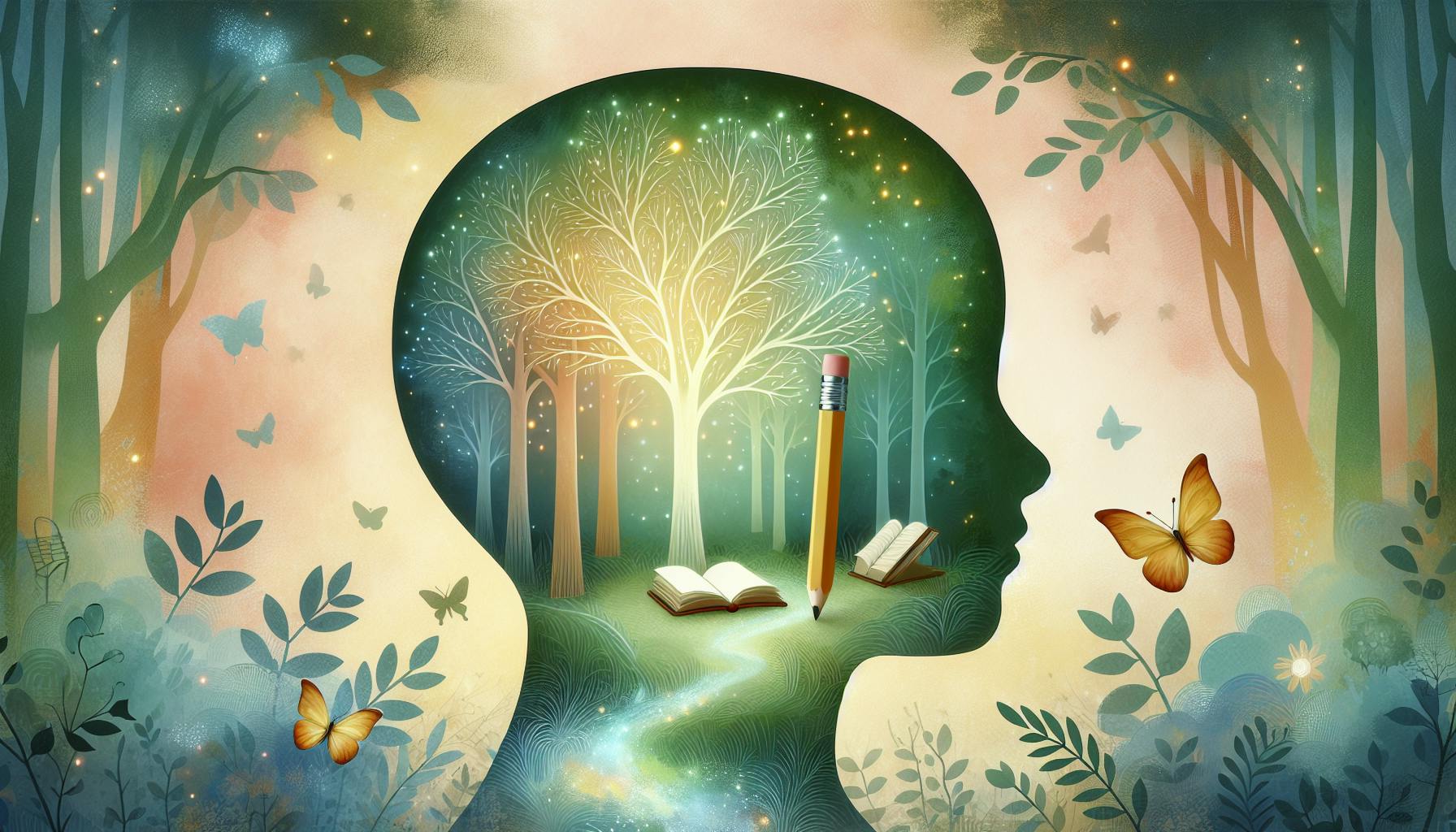Most literature teachers would agree that finding engaging classics to assign students can be challenging.
Well, Pride and Prejudice offers an entertaining way to expose students to complex themes that encourage critical thinking and discussion.
In this review, we'll overview the plot and characters, analyze the key themes and literary devices used, discuss what lessons the novel teaches and why it should be included in school curriculums, provide teaching strategies and solutions to potential challenges, and ultimately recommend Pride and Prejudice as an impactful text for high school students.
Introduction
Pride and Prejudice by Jane Austen is one of the most beloved classic novels, valued for its comedy, romance, and social commentary. As one of the most frequently taught novels in high school English classes, it's important for teachers to have a solid understanding of the book's key elements. This review will provide an overview of the plot, characters, major themes, symbols, and Austen's literary techniques.
Overview of Plot and Characters
The story follows the romantic entanglements of the Bennet sisters, particularly Elizabeth, the second oldest daughter, as she interacts with the handsome but prideful Mr. Darcy. Key characters include:
- Elizabeth Bennet: witty, intelligent heroine who comes to recognize her own pride and prejudices
- Mr. Darcy: wealthy gentleman who struggles with pride and social awkwardness
- Mr. Bingley: Mr. Darcy's cheerful friend who develops a liking for Elizabeth's older sister Jane
- Mrs. Bennet: the eccentric mother determined to marry off her daughters
The novel charts how Elizabeth and Darcy overcome their initial dislike and recognize one another's true virtues on their way to finding love.
Themes and Symbols
Key themes in the novel include:
- Love and marriage
- Reputation and social standing
- The influence of environment and upbringing on character
- Self-knowledge and overcoming one's prejudices
Austen uses symbols like Pemberley estate and the Merryton ball to explore differences in social class and values.
Literary Style and Devices
Austen is known for her ironic narrator, witty dialogue, and subtle social critique. She uses free indirect speech to give insight into different characters' perspectives and reveal their foibles. Other devices include foreshadowing and allusions to enrich the social commentary.
What lessons does Pride and Prejudice teach?
Pride and Prejudice teaches several valuable lessons that remain relevant today:
The dangers of first impressions
One of the central themes of the novel is to avoid making snap judgments about people’s character based solely on first impressions. Elizabeth initially dislikes Darcy because of his apparent arrogance and pride. However, as she gets to know him better, she realizes there is more to him than meets the eye. This demonstrates the importance of looking beyond superficial qualities when assessing someone's true nature.
The value of self-awareness
Through her prejudices towards Darcy and the aloof Bingley sisters, Elizabeth lacks awareness about her own flaws. However, her eyes are opened after reading Darcy’s letter explaining Wickham’s true character. This pushes Elizabeth towards greater self-reflection and recognizing her poor judgment. The novel highlights the importance of self-awareness to develop wisdom.
Overcoming differences
Despite coming from vastly different social classes and backgrounds, Elizabeth and Darcy are able to see past their pride and prejudices to recognize their love for one another. Their relationship demonstrates that even the most seemingly incompatible people can find common ground and happiness if they learn to overcome their differences with understanding.
What Pride and Prejudice teaches readers?
Pride and Prejudice by Jane Austen is a beloved classic that offers important life lessons that are still relevant today. Though set in 19th century England, the novel explores universal themes that modern readers can relate to.
Here are some key lessons teachers can draw from the book to discuss with students:
- The danger of prejudice and snap judgments. The story shows how our biases can create misunderstandings and barriers between people. Forming opinions of others too quickly, without getting to know them, often leads to mistakes.
- The importance of overcoming pride. Mr. Darcy and Elizabeth both struggle with pride and learn humility throughout the novel. Examining their personal growth reminds us not to let ego or social status get in the way of connection.
- The value of second chances. Darcy and Elizabeth get opportunities to move past their initial poor impressions of one another. Their story underscores the power of forgiveness and seeing the best in each other.
- The influence of social pressures. The Bennet sisters face intense social expectations around courtship and marriage. Analyzing these pressures allows meaningful discussion around gender roles both then and now.
By exploring these themes, Pride and Prejudice offers insightful perspectives on judgment, identity, and relationships that can lead to rich dialogue in the classroom. Its timeless messages about human nature provide lessons that continue inspiring readers centuries later.
Why should Pride and Prejudice be taught in schools?
Pride and Prejudice by Jane Austen is a classic novel that explores universal themes that resonate with students today. Here are some key reasons why it remains an important and relevant text to study in schools:
- It examines social class, reputation, first impressions, and prejudice - all issues students still face. Discussing the characters and plot can lead to thoughtful debates around these topics.
- The novel promotes critical thinking skills. Students can analyze the narrator’s social commentary and ironic tone. They can also evaluate arguments on both sides of issues raised.
- Austen’s writing style itself is highly skilled, making Pride and Prejudice a useful model to study literary techniques like foreshadowing, satire, and free indirect speech. Students improve their own writing abilities through close reading.
- The novel provides a window into 19th century British society. Students gain insight into customs around courtship, manners, gender roles, and class divisions - valuable historical and cultural perspectives.
- Pride and Prejudice examines multiple viewpoints, including those of the middle and upper classes. This allows students to consider and discuss perspectives different than their own.
In summary, reading and studying Pride and Prejudice offers students both life lessons in judgment and empathy as well as hones their critical thinking and literary analysis skills. Assigning this classic novel is thus a worthwhile endeavor for any English teacher.
sbb-itb-bb2be89
What grade level should read Pride and Prejudice?
Pride and Prejudice is a classic novel by Jane Austen that explores themes of love, class, reputation, and personal growth. Due to some complex social commentary and writing style, it may be best suited for more mature middle school or high school students.
Here are some key considerations regarding what grade level could read and appreciate Pride and Prejudice:
- Language Complexity: The language used is fairly sophisticated, with intricate dialogue and some antiquated phrasing. This level of complexity may frustrate readers below 6th grade.
- Social Commentary: Much of the novel provides insightful commentary on 19th century British social norms and class structures. Younger students may struggle to fully comprehend some of the social implications.
- Romantic Plot: There are multiple romantic subplots that some pre-teen students may not connect with as strongly. The themes of love and marriage resonate more with teenagers.
- Length: At around 300 pages, it requires strong reading comprehension skills and ability to follow multiple story arcs. The length could overwhelm struggling young readers.
Overall, Pride and Prejudice is likely best suited for mature middle school students and up. A reasonable target age range would be 12 years old and beyond. With some guidance, high school freshmen could also potentially appreciate the novel. The book offers opportunities to explore many meaningful themes relevant to adolescent and teenage experiences.
Teaching Potential
Pride and Prejudice explores universal themes that resonate with high school students, sparking insightful discussions and analysis. As a classic novel, it allows opportunities for comparative study across mediums and time periods. Creative writing prompts build skills through modernizing scenes and characters.
Reader Response and Class Discussion
Pride and Prejudice tackles concepts like first impressions, social status, family obligation, and overcoming prejudice that students grapple with daily. Have students journal initial thoughts on key characters. Then contrast those impressions against transformations by the conclusion. What surprised them? What realizations did they gain? Open dialogue allows students to unpack biases, assumptions, and growth.
Compare social norms in the novel to modern society. How have customs shifted regarding status, courtship, parental involvement in relationships, women's roles, etc.? Examine Austen's subtle feminist undertones. Does the book promote or undermine gender stereotypes?
Explore relatability of themes across generations. Have students find quotes exhibiting universal experiences - peer pressure, miscommunication in relationships, class differences, etc. How are these issues still relevant? Discussion builds empathy, self-reflection, and media literacy.
Comparative Analysis
Compare Pride and Prejudice to Jane Austen's other works like Emma or Sense and Sensibility. Examine common themes regarding social/class mobility, love transcending status, satirizing conventions, etc. What core messages permeate Austen's bibliography? What unique perspectives does each novel bring?
Contrast Pride and Prejudice transformations (e.g. Elizabeth and Darcy overcoming original prejudices) to those in coming-of-age films like Mean Girls, Clueless, or The Breakfast Club. Have students analyze growth arcs of key characters. What external and internal factors shape their evolution? How do the mediums and genres shape the storytelling?
Creative Writing Exercises
Have students write diary entries from perspectives of key characters at pivotal moments. Explore how Elizabeth feels about Darcy's first proposal or her reactions to Wickham's elopement. Practice getting into characters' mindsets.
In groups, write alternate endings had key events played out differently. What if Jane married Mr Collins? Did Wickham successfully elope with Lydia? Would Darcy still marry Elizabeth? Perform skits of these variations.
Modernize the novel's key scenes and characters. Transform the Netherfield ball into a modern house party. Turn Lady Catherine into a pushy helicopter mom interrogating Elizabeth about Darcy. Put a contemporary spin addressing relevant issues students connect with.
Challenges and Solutions
Language and Accessibility
Pride and Prejudice contains complex vocabulary and sentence structures that can make the book inaccessible for some students. As a teacher, you can help students understand challenging language in a few key ways:
- Create a running glossary of difficult words and archaic terms. Have students add to this glossary when they encounter unfamiliar language. Review the terms as a class.
- Break down complex sentences into shorter clauses. Analyze the syntax with students to ensure comprehension.
- Relate unfamiliar terms to more common synonyms. For example, "countenance" can be explained as facial expression.
- Provide audio recordings of passages read aloud at a moderate pace. This allows students to hear the language and follow along with the text.
- Encourage students to highlight or circle words they don't understand. Review these terms one-on-one or in small groups.
Student Engagement
Getting students interested in a classic novel can be challenging. Consider these engagement strategies:
- Make relevant pop culture connections between Pride and Prejudice and books/shows students already enjoy. Compare Mr. Darcy to modern romantic heroes.
- Create supplemental study guide packets with vocabulary, comprehension questions, and writing prompts for each chapter.
- Show film adaptations of scenes after students have read them. Compare and contrast the versions.
- Organize students into reading circles to discuss each volume of the novel. Have them share questions and favorite passages.
Assessment
You can assess student learning on Pride and Prejudice in diverse ways:
- Craft Socratic discussion prompts about the themes of social status, marriage, and gender roles. Evaluate student participation.
- Develop a quiz on plot points and characters. Assess for reading comprehension.
- Assign a literary analysis essay tied to standards on citing evidence and determining theme.
- Have students imagine modern social media profiles for characters. Assess creativity and character understanding.
- Organize a debate around the novel's central romantic relationship. Evaluate persuasive speaking skills.
Conclusion and Recommendation
Pride and Prejudice is a timeless literary classic that offers invaluable insights into human nature and society. As an educator, I highly recommend teaching this novel for the following reasons:
- The themes of reputation, class, gender roles, and personal growth resonate strongly with young readers. Students can analyze the social mores of Regency England and draw connections to modern society.
- The sharp wit and social satire of Austen's writing style serve as excellent models for creative writing assignments. Students can try their hand at drafting letters, diary entries, or dialogues inspired by the novel’s events and characters.
- The romantic plot and the relevance of its themes to adolescent experiences make it engaging reading material. Educators can design interactive lessons analyzing the development of key relationships.
- The novel lends itself well to interdisciplinary, project-based learning activities like recreating scenes through comics or plays. Such collaborative assignments allow students to approach the text creatively.
In summary, Pride and Prejudice is a profoundly insightful study of universal human experiences like love, judgment, and personal evolution. Its multilayered text offers rich fodder for analysis and discussion. I believe integrating this classic into secondary or high school English curriculums can be deeply rewarding for both educators and students.


